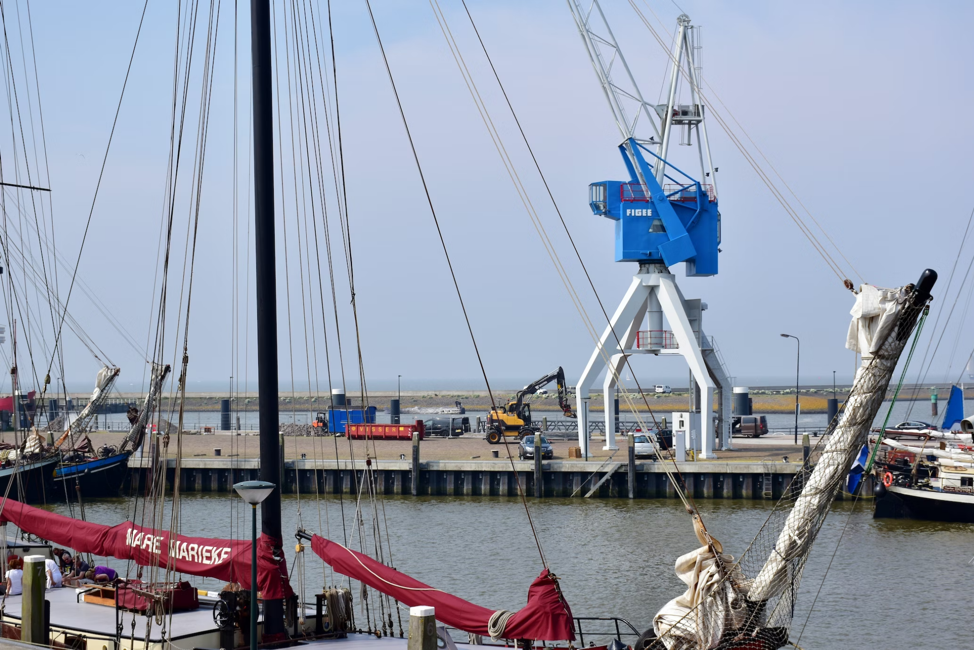Our society has changed due to digitalization, and ports are no exception. The shipping and port sector that transfers materials and goods internationally is essential to the world economy.
It is no secret that the port industry faces issues like rising costs, real-time tracking, security, and container lashing. But one issue most people overlook is digitalization. To handle sea transportation more effectively, support for digital technology is crucial with the expansion of global trade and the new difficulties it generates. Like all other industries, the marine business is shifting towards digitization and automation to meet the challenges and seize the potential presented by such an effort.
Contents
What Is Port Digitalization?
Port digitalization uses digital technologies to allow sustainable port operations, improve the productivity, accountability, and competitiveness of ports, terminals, and pilot stations. Blockchain, digital twins, preventive maintenance, and electronic documentation are examples of such technology.
Ports can use digital technology to automate and streamline processes, lower the possibility of errors, and increase the overall effectiveness of the supply chain. By giving all stakeholders access to a single source of information and documents, digitization can decrease costs and improve transparency.
There are various benefits to port digitalization. Here are some of them:
Improved Efficiency
Automating and streamlining processes using digital technologies can help increase productivity while lowering the chance of errors. For instance, crews can use digital technologies to schedule ships, track cargo, and improve freight flow through the port.
Cost Savings
By removing manual processes and improving operational efficiency, digitalization can help cut expenses. Digital systems, for instance, can be used to monitor and optimize the usage of resources like labor and fuel.
Increased Transparency
By giving all stakeholders access to a single source of information, digital technology can increase transparency. It can lower the possibility of mistakes and fraud and improve the supply chain’s general effectiveness.
Enhanced Customer Experience
Digitalization can improve the customer experience by enabling online access to data and services, real-time tracking and visibility of shipments, and other features.
Better Cost Distribution
Digitalization can aid in cost distribution amongst port users such as contractors and ship owners. Through the use of electronic invoicing and billing systems, digitalization can make this easier.
Many digital technologies provide such benefits to the maritime industry, especially in reducing maritime emissions. One of them is the Internet of Things (IoT).
What is IoT Technology?
The term “Internet of Things” or IoT is one we hear more and more often in various settings. This phrase means “connected things equipped with sensors, software, and other technologies that allow them to transmit and receive data.” Some devices run by IoT are smart light bulbs, a mouse, an autonomous vehicle, or even a washing machine.
How Does IoT Work?
These devices assist us in automating activities and decisions made moving forward using the data they collect. It follows a 4-stage process to operate successfully.
Data collection: IoT devices contain sensors that allow them to collect various data from their surroundings.
Data sharing: Using network connections, the devices communicate the data gathered to a public or private cloud system (creating a device-system-device connection) to another device (creating a device-device connection) or save the data directly on a local hard drive.
Data processing: Depending on the device and the purpose it is programmed to carry out, software inside the device is programmed to carry out an action based on the data acquired.
Data-driven action: The devices create an IoT network based on the data gathered. This information is essential for developing a strategy, taking appropriate action, and making decisions in the future.
How Does Iot Transform the Port Operations
IoT technology guarantees effectiveness and security in international trade and maritime transportation. It opened up new possibilities for streamlining and enhancing port operations as it develops.
Optimizing Operations
Port managers can monitor and manage operational areas like container tracking, vessel traffic control, logistics management, and equipment maintenance because of data gathering and interchange offered by these devices. Waiting times and operational costs are decreased while increased efficiency is obtained through process optimization.
Improved Security
The continuous monitoring of port areas and the early identification of potential events or dangers are made possible by sensors in connected equipment in ports. It comprises access control, fire detection, environmental risk management, and facility security monitoring and surveillance. Responding to incidents quickly and automatically enhances security and safety and safeguards personnel and cargo.
Assets and Upkeep Management
This technology makes it possible to see where and how things are going with port assets. Sensors built into infrastructure and machinery can gather information on performance, energy use, weather, and wear and tear. The proactive asset management and predictive maintenance planning made possible by this data helps to minimize downtime, prevent unexpected breakdowns, and manage resources more effectively.
Final Thoughts
E-commerce will fuel import and export demand in the upcoming years. All participants in the maritime sector must be prepared to satisfy criteria that are continually changing. As a result, catching up to the rest of the world will take time. And there won’t be a great way to subscribe to achieve the goals. Experts suggest that everyone acts according to digital technologies when performing daily duties. The advances will eventually help to benefit shipping operators and significantly improve the industry’s economics.
IoT technology implementation is essential to port management. It offers several benefits, including increased security and safety, asset and maintenance management, and operational optimization. It may also come with difficulties related to complexity, scalability, cyber security, and technology obsolescence. Even though overcoming these obstacles can be difficult, IoT has the potential to revolutionize port management by enhancing the productivity, security, and sustainability of ports all around the world.




